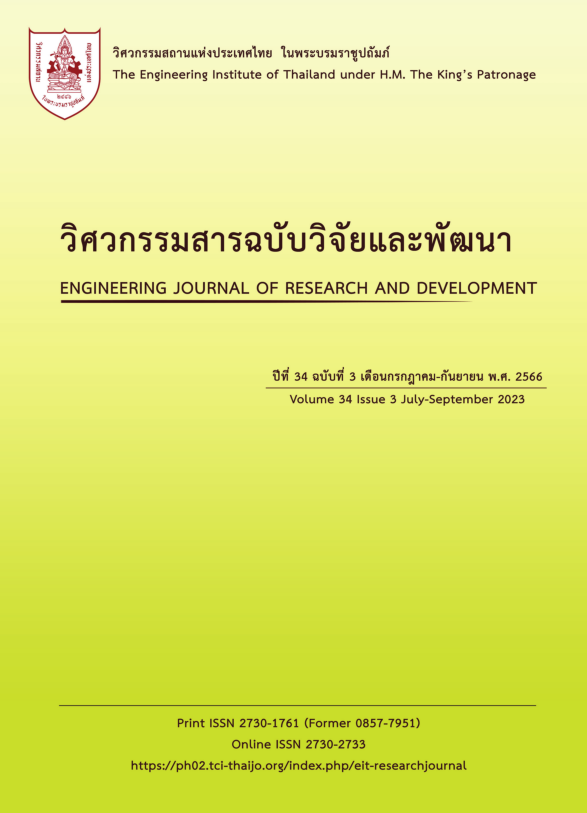EXPLOITING INDOOR GEOSPATIAL INFORMATION TECHNOLOGY AND ARTIFICIAL INTELLIGENCE FOR MOVEMENT MONITORING AND SPATIAL TRACKING: AN ADAPTIVE RESPONSE TO COVID-19 PANDEMIC SCENARIOS
Main Article Content
Abstract
The advancement of artificial intelligence systems in monitoring the movements of any object using current closed-circuit cameras in conjunction with geospatial information technology is an intriguing and essential topic in surveying engineering. It can be used to manage property and health security, particularly during the COVID-19 pandemic, which has caused significant injury to humanity. The concept of "social distancing" refers to maintaining a distance of more than 2 meters between individuals as a prevention method. Disease surveillance necessitates, therefore, the precise identification of the location of individuals in various locations. This research seeks to incorporate closed-circuit television cameras with geospatial information technology within structures, using artificial intelligence systems to monitor and identify movements and locations. This integration's primary function is coordinate transformation. Based on the preceding, this research aims to convert coordinates using an affine transformation equation and an artificial intelligence system to track individuals' movements for positioning within the indoor coordinate system. The research analyzed the interconnection of multiple cameras. It demonstrated the position of individuals derived by applying artificial intelligence systems for motion tracking and converting coordinates using a joint equation system. The accuracy of position identification was attained within a tolerance of 0.5 meters, which is an acceptable error level because it is smaller than the average diameter of a person. Even though the current COVID-19 pandemic has necessitated the enforcement of physical separation, the study's results indicated that if another disease outbreak necessitating similar separation measures occurs in the future, the findings of this research can be applied immediately.
Article Details

This work is licensed under a Creative Commons Attribution-NonCommercial-NoDerivatives 4.0 International License.
The published articles are copyright of the Engineering Journal of Research and Development, The Engineering Institute of Thailand Under H.M. The King's Patronage (EIT).
References
World Health Organization. Epidemiological update: Coronavirus disease (COVID-19), 11 March 2021. Available form: https://reliefweb.int/report/costa-rica/epidemiological-update-coronavirus-disease-covid-19-11-march-2021 [Accessed 26 August 2023].
Nakhon Ratchasima Rajanagarindra Psychiatric Hospital. “Social distancing” what is it and how to apply, 19 August 2020. Available form: https://www.jvkorat.go.th/th/?p=2114 [Accessed 24 April 2021].
Centers for Disease Control and Prevention. COVID-19, 26 January 2021. Available form: https://www.cdc.gov/coronavirus/
-ncov/prevent-getting-sick/prevention.html [Accessed 08 July 2021].
Zhao, T. et al. Is one- or two-meters social distancing enough for COVID-19. Public health, 2020, 185: 87.
DOI: 10.1016/j.puhe.2020.06.005.
Ciric L. One metre or two? the science behind social distancing, 18 June 2020. Available from: https://theconversation.com/
one-metre-or-two-the-science-behind-social-distancing-139929 [Accessed 24 April 2021].
Yang, D. et al. A vision-based social distancing and critical density detection system for COVID-19.
Image and Video Processing Computer Vision and Pattern Recognition Sensors, 2021, 21(13): 4608. DOI: 10.3390/s21134608.
Thairath online. Timeline 31 Egyptian navy unit visits 2 malls in Rayong, 14 July 2020. Available from: https://www.thairath.co.th/news/politic/1888919 [Accessed 28 April 2021].
Shirsat, S. et al. Proposed system for criminal detection and recognition on CCTV data using cloud and machine learning. In: international conference on vision towards emerging trends in communication and networking (ViTECoN), Vellore, India, 30-31 March 2019.
Pi, Y. et al. Deep learning for visual analytics of the spread of COVID-19 infection in crowded urban environments. American Society of Civil Engineers (ASCE), 2021, 0000492: 1527-6996. DOI: 10.1061/(ASCE)NH.1527-6996.0000492.
Manoharan, J. S. Finding an optimal distance of social distancing for COVID 19, Journal of ISMAC, 2021, 3 (3), pp.206-220.
DOI: 10.36548/jismac.2021.3.003.
Redmon, J. YOLO: real-time object detection, n.d. Available from: https://pjreddie.com/darknet/yolo/ [Accessed 07 June 2023]
Bochkovskiy, A. YOLOv4 / scaled-YOLOv4 / YOLO - neural networks for object detection, 23 April 2020.
Available from: https://github.com/AlexeyAB/darknet [Accessed 07 June 2023].
Joscher, G. YOLOv5 in PyTorch, 26 June 2020. Available from: https://github.com/ultralytics/yolov5 [Accessed 07 June 2023]
Bochkovskiy, A. Darknet, 21 June 2017. Available from: https://github.com/pjreddie/darknet [Accessed 07 June 2023].
Kukil. Object detection using YOLOv5 OpenCV DNN in C++ and Python, 12 April 2022. Available from: https://learnopencv.com/
object-detection-using-yolov5-and-opencv-dnn-in-c-and-python/ [Accessed 17 August 2022].
Waisurasingha, C. Photogrammetry. SE-EDUCATION Public Company Limited: SE-EDUCATION, 2020.
Roboflow. Roboflow, 2020. Available from: https://roboflow.com/ [Accessed 10 December 2021].


